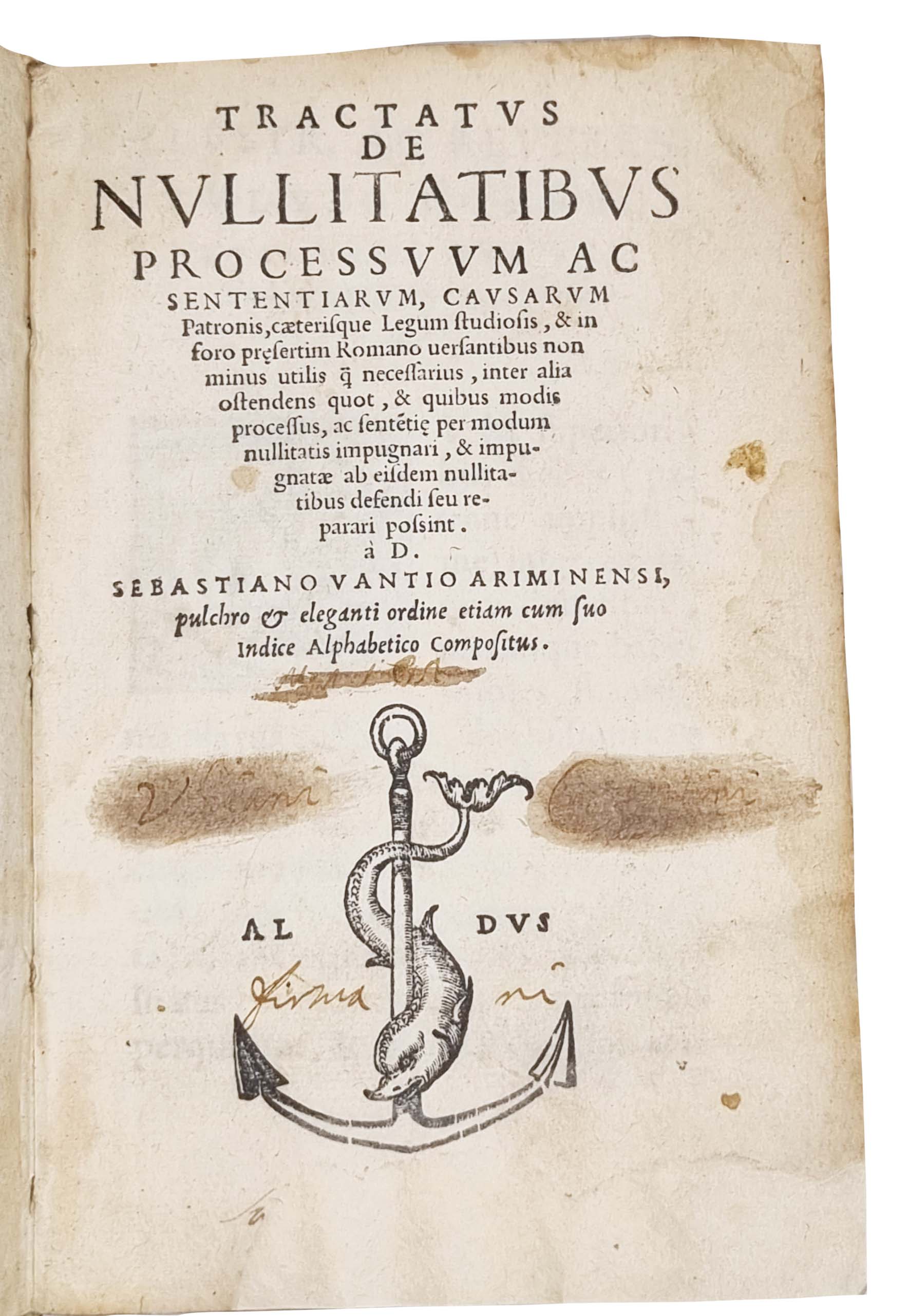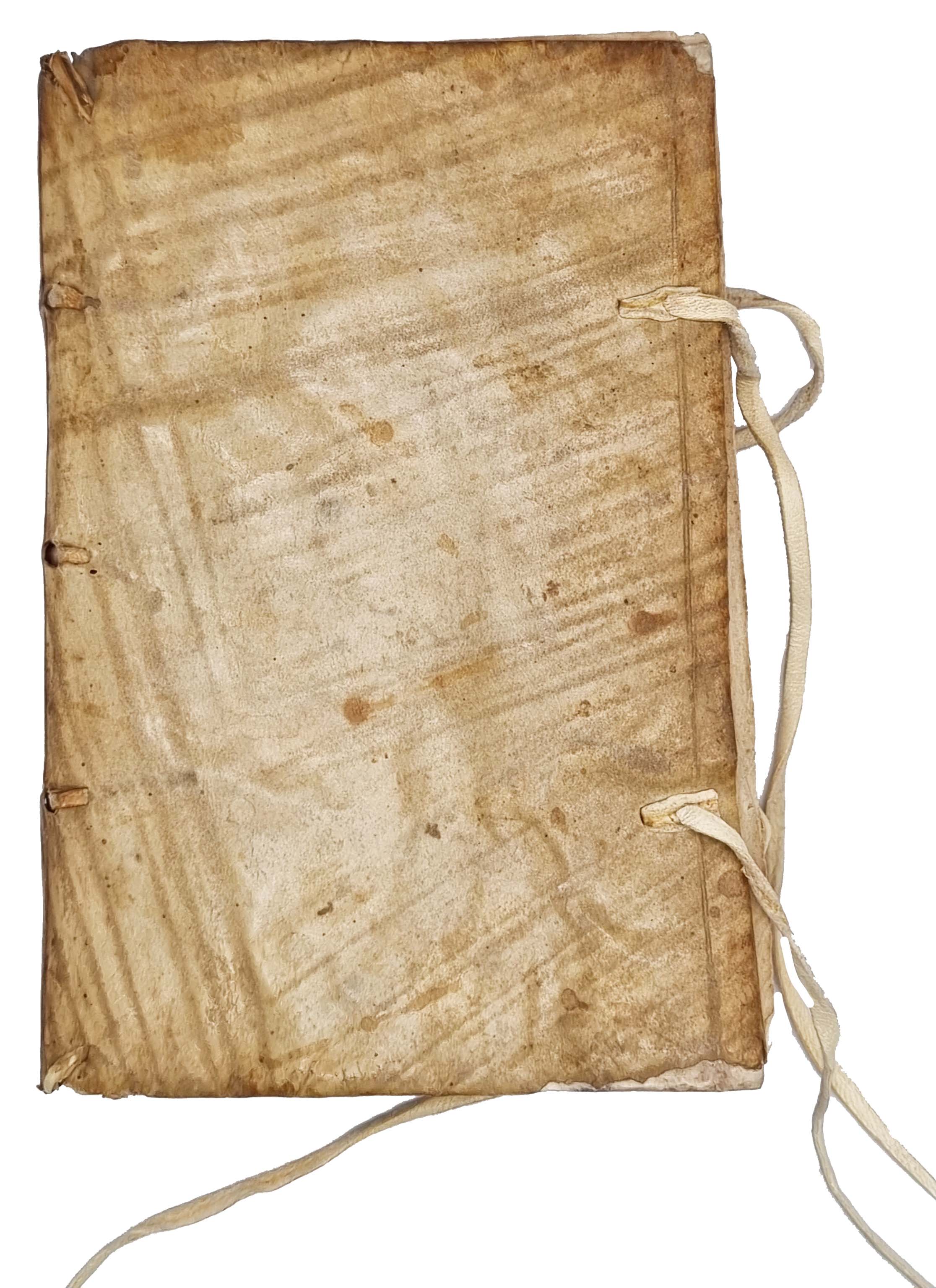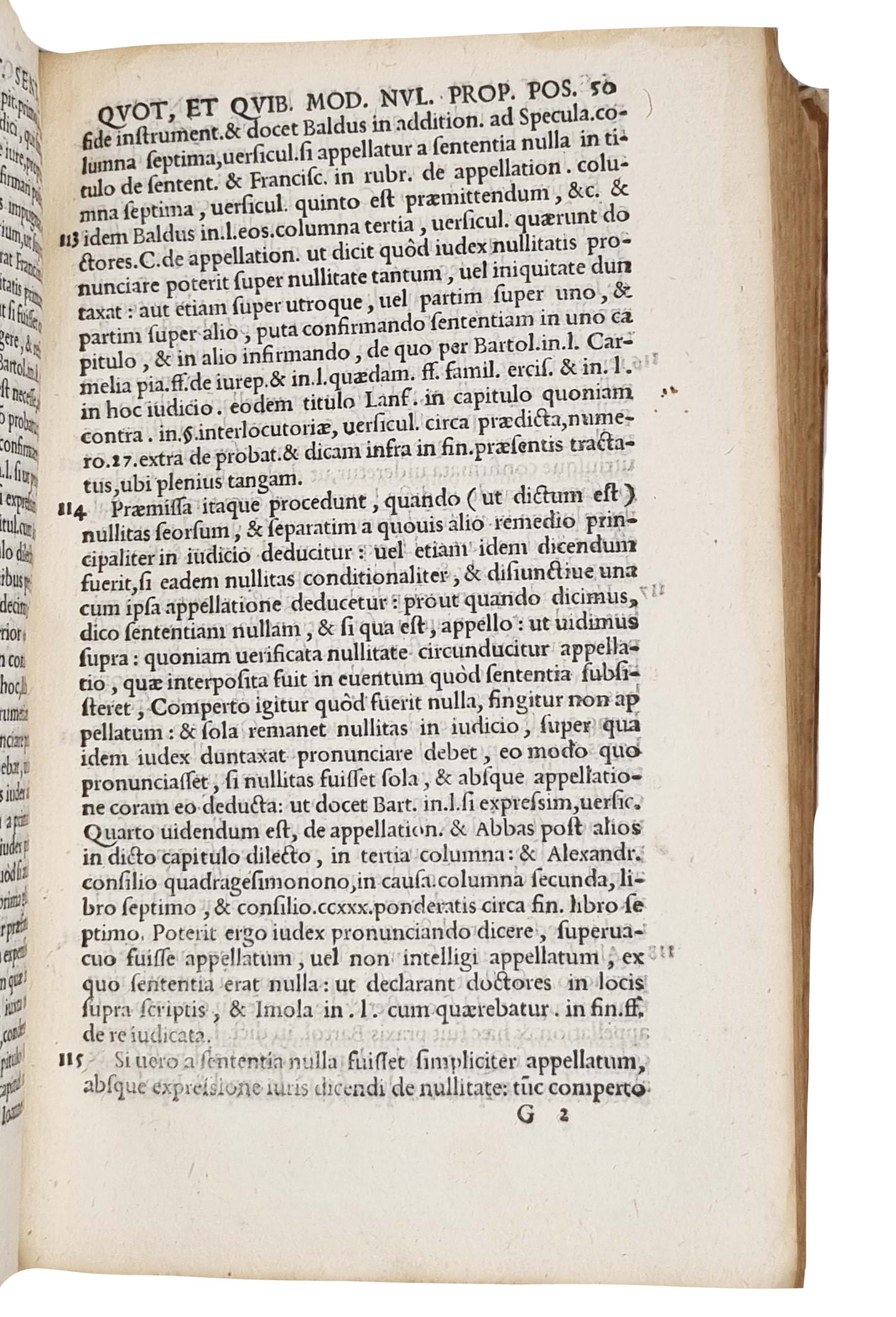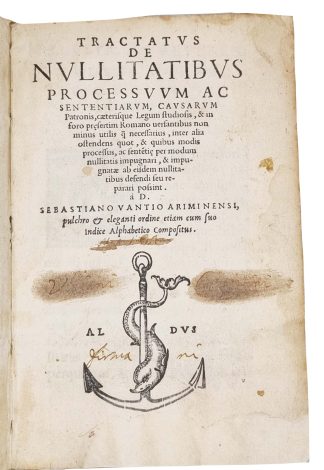VANZI, Sebastiano.
Tractatus de nullitatibus processuum ac sententiarum (…)
Venezia, heirs of Aldo Manuzio, 1554£2,950.00
8vo, ff. (viii) 273 (liii). Roman and Italic letter, woodcut historiated initials, Aldine device to t-p. Intermittent waterstains and light spotting to outer blank margins, mainly to a few initial and final gatherings, title page a little bit soiled with partly cancelled early ms. ex. libris “Ulpiani Constantini firmani”, lower outer corner repaired. A good copy in contemporary limp vellum, corners repaired, later ties.
Second edition, first by the Aldine press, of this bestseller legal treatise on procedural nullity, that is the annulment of a legal act or a procedure. First published in 1552 in Lyon, this is Vanzi’s only work: with twenty-four editions printed before 1625, the ‘Tractatus’ earned the author international fame. Sebastiano Vanzi of Rimini (d. 1571) was an Italian jurist and lawyer who held the post of lieutenant of the auditor general of the Camera Apostolica in Rome under Pope Paul IV. In 1554, he was appointed bishop of Orvieto and attended the last session of the Council of Trent as one of the diffinitors.
‘Tractatus de nullitatibus’, defined as “useful and extensive” by the author, is a brief but comprehensive discussion on the legal concepts of nullity and annullment. In Roman civil and criminal law, a sentence, judgement or legal act can be declared null in the absence of an element which is deemed essential to the effectiveness of the procedure – e.g. if the law was not fully followed, or infringed. In this treatise, Vanzi provides a general definition of the concept of nullity together with its etymology. The author explains how null procedures or sentences can be recognised (i.e. they are ‘missing’ something), indicates who has the right to raise a claim of nullity during a trial or outside the court (i.e. all the actors involved) showcasing different situations. Vanzi also specifies in front of whom a plea of nullity has to be raised and who has the power to evaluate and annul (e.g. an appointed judge). The author describes in detail different types of nullity – e.g. “ex defectu iurisditionis”, “ex defectu citationis”, “ex defecto processus” – and how they can be ‘repaired’.
The manuscript ex libris on the title page belongs to ‘Ulpianus Constantinus Firmanus’, most likely Ulpiano Costantini of Fermo, a city in the Marche region (central Italy). Ulpiano (mid. XVII century) was a member of the ancient and noble Costantini family and a professor of jurisprudence at the University of Fermo (see ‘Enciclopedia storico-nobiliare italiana’, Vol. II, 1981, p. 564).
USTC 861997; BM STC It. C16, p. 721; Adams V244; Renouard Alde 159:4. Not in Brunet or Graesse.In stock





